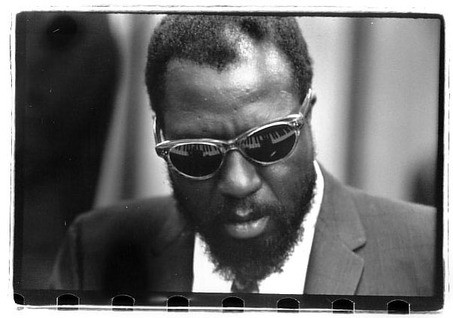In today’s lesson, I’m excited to show you an intermediate arrangement I came up with for his tune “Epistrophy.” This tune was a request from one of my youTube subscribers, and I thank you for that! Keep ‘em coming!
Epistrophy is a tough tune to play – the melody has some odd twists and turns and strange chromatic notes (do you expect anything less from Monk?) so I figured I would keep this arrangement fairly simple. The RH plays just the melody and the LH plays a simplified stride. In the following video tutorials, I teach you how to play the arrangement step-by-step.
Here are the steps I take to teach you the tune in the video tutorial. I divide the tune into 3 sections, I call the A section the first 4 measures (starting on Db7), the B section the second 4 measures (starting on Eb7), and the C section is the bridge of the tune – the 8 measures that starts on an F#-6 chord.
A SECTION
1. Learn the melody! Pay attention to the fingerings – they matter! It’s also helpful to know the intervals – this will help you memorize and HEAR the tune. This melody, for example, starts on the root of the Db7 chord (Db), goes up a half-step, up a minor 6, and then down a tri-tone. Watch the video to get the rhythm.
2. For the LH, I did a simplified stride feel. For the Db7 chord we play Db (root) on beat one and F/Cb (third-seven) on beat two. For the D7 we play D (root) on beat three and F#/C (third-seven) on beat four. Loop this until it grooves. Try to separate the notes (non-legato) so it really has a bounce to it.
3. Put it together! Remember, slow at first, then speed it up.
B SECTION
Learn this just like you did the A section, melody first in the RH, simplified stride in the LH, and then put it all together, nice and slow. At first glance, you may think that the B section is just a modulation up a whole step from the A section, but not so fast! Check it out – remember before I said how the A section melody starts on the root of the chord, goes up a half-step, and then goes up a minor 6? Now check out the melody of the B section – it starts on the b9 of the chord (E natural on an Eb7 chord), goes up a half-step, and then up a 5th. I love this! Such a subtle difference.
C SECTION
We start on an F#-6 chord split up in the hands. Root and 6th (F# and D#) in the LH and third (A) in the RH. For the B7, we play a shell voicing in the LH (B, D#, A). For the last two measures of the bridge, there is a nice harmonization of the melody. The melody is on an F, Ab, Cb, and Eb (or the 3rd, 5th, 7th, and 9th) of a Db7. We harmonize that in the LH with a Db, F, Ab, Cb (or Root, 3rd, 5th, 7th) of a Db7. Same thing on the D7, just up a half step!
THE FORM
Form is important in this tune. Getting the big picture will really help you memorize this one. The way I think of it (remember my A, B, and C sections):
ABBA C BA – on the last A we end on a Gb7 (root and 7 in the LH and 3rd in the RH).
BOOK RECOMMENDATION
And last, just want to give a recommendation for an excellent book that has great lead sheets for every single one of Monk’s compositions. It’s put out by Hal Leonard and is called “Thelonious Monk Fakebook.” These lead sheets are much more accurate and detailed than what you find in the Real Book. They give you great little Monk-isms (piano voicings, rhythms, etc) that are important to the songs. Additionally, the book lets you know which recording the lead sheet was transcribed from so you can reference the recording.
Check it out on Amazon here.
Hope this brings you a bit closer to the great music of Thelonious Monk – Happy Shedding!


 RSS Feed
RSS Feed